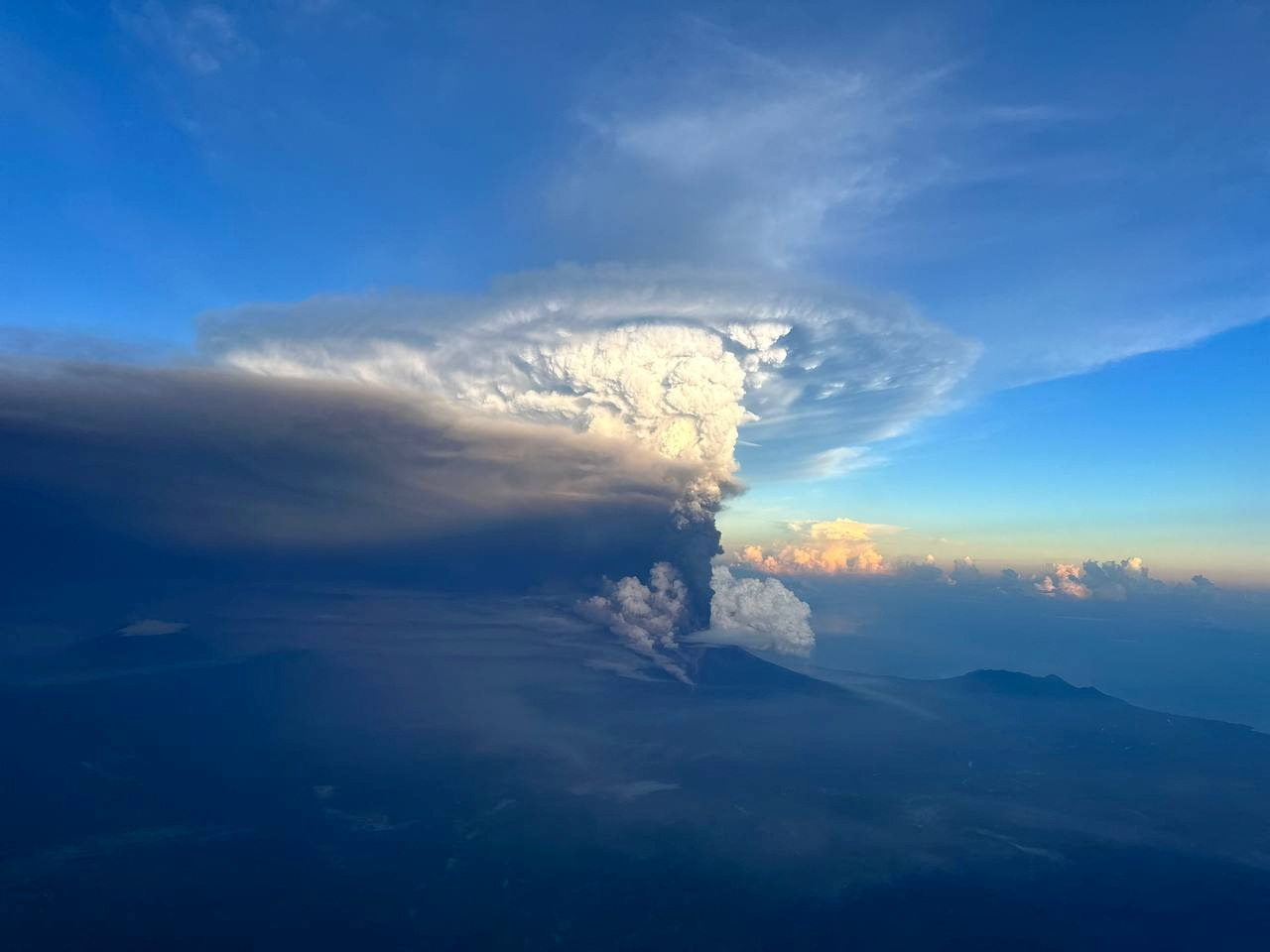
A volcanic eruption on a remote island of Papua New Guinea has pushed some residents to begin evacuating and the island’s airport to cancel flights.
Ulawun, the South Pacific nation’s most active volcano, spewed smoke up to 15km (9.3 miles) in the air on Monday afternoon, the country’s Geohazards Management Division said, in its first significant blow-up in years.
The eruption on New Britain island prompted officials to coordinate evacuation plans and cancel fights at the region’s Hoskins airport.
The ash plume continued to rise on Tuesday, reaching at least 5km (3.1 miles), but the country’s geological hazard division downgraded its alert level from Level 4 to Level 3 – indicating a “moderate to strong eruption” rather than a “very strong eruption”.
Still, the volcano remained active and the outburst could continue indefinitely, the division said.
The prospect of the blast triggering a tsunami off the coast of Japan was ruled out on Tuesday, the division said.
The erupting volcano is 47km (29 miles) away from the Papua New Guinean town of Bialla, which is built among oil palm plantations on Ulawun’s slopes.
The division said heavy coatings of black ash were causing leaves to droop in oil palm plantations near the volcano and were accumulating on roofs.
‘Ring of Fire’
Papua New Guinea sits on the Pacific “Ring of Fire”, an arc of seismic faults around the Pacific Ocean where much of the world’s earthquake and volcanic activities occur.
Ulawun has repeatedly erupted since the 1700s. Its last significant eruption in 2019 forced more than 5,000 people to evacuate.
The division said there were no known casualties from Ulawun’s history of eruptions.
But major effects in terms of population displacement, infrastructure damage and disruption to services were common, the division said.







